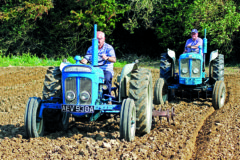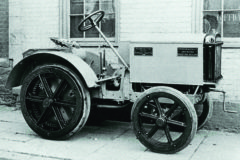Spotlighting Ford’s 6610 tractor
Posted by Chris Graham on 8th March 2021
The late Alan Barnes takes a detailed look at Ford’s 6610 tractor; a popular member of the 10 Series family from the 1980s and ‘90s.
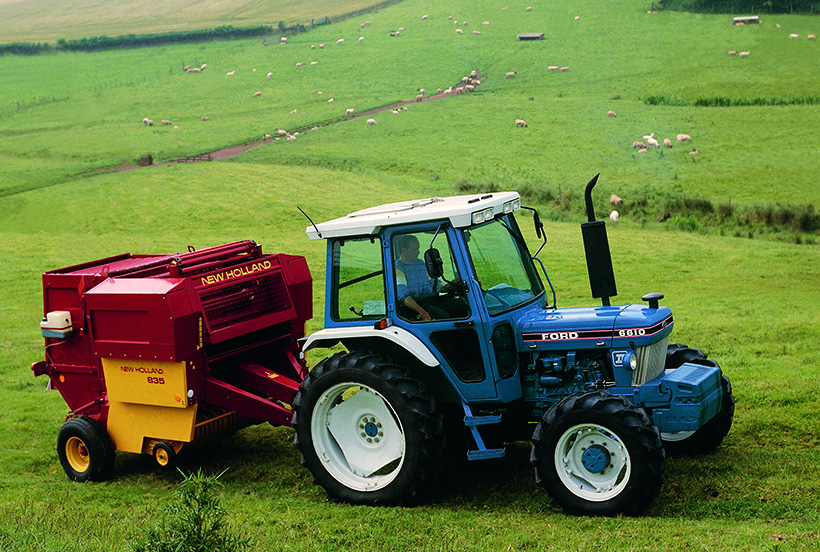
A publicity photograph of Ford’s 6610 tractor, in Series ll guise. (Pic: Ford New Holland Archive)
In all honesty, there aren’t a huge number of tractors to be found along the winding Ingram Valley, which cuts its way into the hills of the Cheviots, in Northumberland. Much of the land there is given over to rough pasture, where sheep and cattle are grazed and a couple of sheepdogs and a quad bike seem able to handle any work involved in moving stock. Arable and cereal crops are grown in some of the fields on the lower slopes, mainly for feed, where there’s the odd, modern John Deere or Massey Ferguson to be seen. However, a little more intriguing are my regular sightings of one of Ford’s 6610 tractors which, although ageing, always seems to be handling whatever’s thrown at it without any bother at all.
Still going strong!
The tractor dates from August 1988, and was bought by farming brothers, Stephen and James Shell, in 1990. What’s more, all these years later, it’s still going strong. The tractor was bought new by a farmer at Howick – a small village near the Northumberland coast – and had been used mainly for planting and harvesting turnips. Stephen was familiar with the machine and, when the owner decided to trade it in for a larger model, he decided that it would be a useful addition to his own ‘fleet’ of Ford tractors.
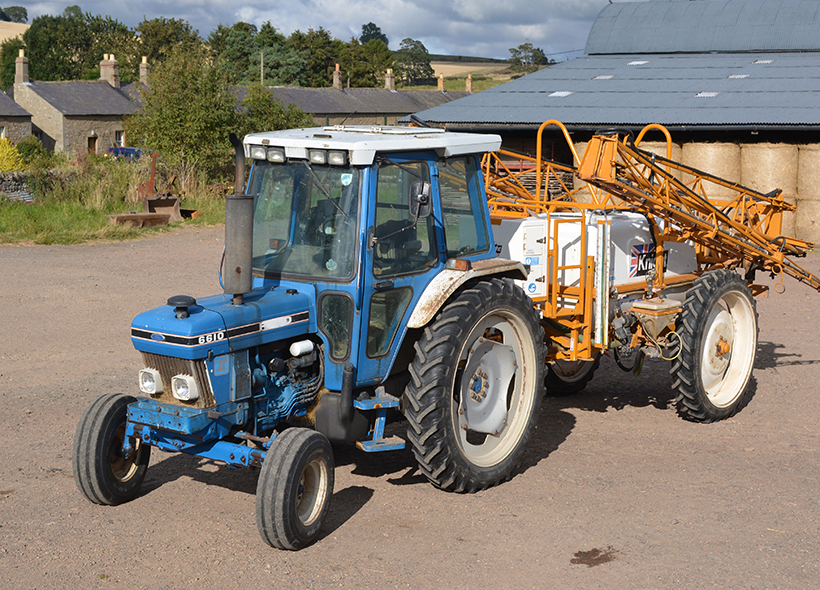
A 1988 Ford 6610 with sprayer waits in the stock yard. (Pic: Alan Barnes)
Their farm still uses a number of eldery Ford tractors but, from the 1955 Fordson Diesel Major to the 1989 Ford 7610, all still earn their keep. The farm also runs a couple of modern, New Hollands for ploughing and any really heavy work, but the ‘second string’ Fords – including the 6610 – all remain in regular use. Over the years, the 6610 has proved a very reliable and versatile machine, being used with a log splitter during the winter, handling the spraying when required, being hooked-up to a baler during harvest and trundling around the farm with a trailer taking feed to the stock out on the hills.
As Stephen told me, “While the 6610 has been very reliable, it did develop a serious engine problem a while ago, and it was easier to fit a reconditioned unit rather than repair the original. Since then, though, it’s not put a foot wrong. It gets an oil change now and then and, apart from an annoying oil leak which refuses to be cured, I think that the tractor has years of life left in her yet. She always starts on the button, whatever the weather, and it certainly gets cold up here in the hills during the winter.
A popular middleweight
The 6610 was one of the models presented when Ford officially launched their new 10 Series range of tractors in Geneva in September 1981. Described as ‘The Popular, Big Power Middleweight’, 6610 was fitted with a Ford four-cylinder, 4.4-litre, direct-injection diesel engine rated at 72hp. It featured a large cross section cross-flow cylinder head for improved fuel economy, a five-bearing crankshaft running on heavy-duty bearings, a high-capacity alternator, higher rate injection pumps, controlled flow nozzles for uniform fuel distribution and combustion, plus a large air cleaner to give great air flow and improved combustion.
All-in-all, it was a rather tidy and powerful package, but early models did suffer with porous engine blocks, leading to oil contamination; a serious problem which led to design changes and the introduction of a heavy-duty, ribbed cylinder block.
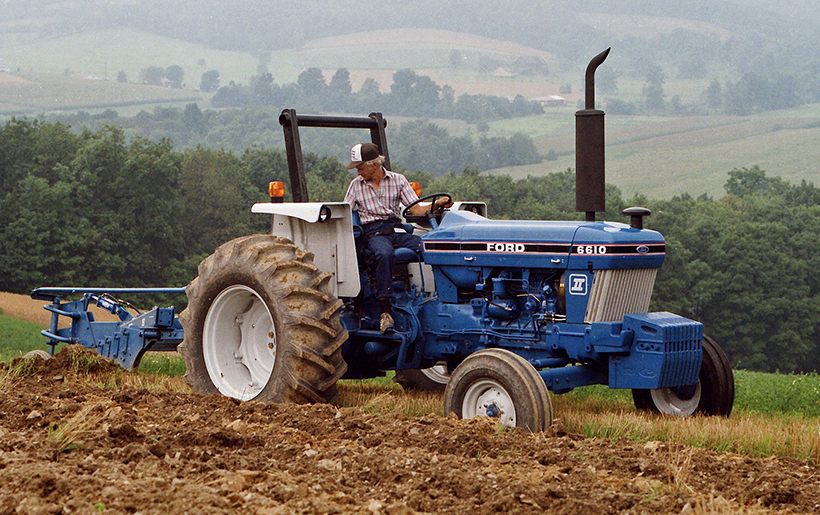
An open-platform 6610. (Pic: CNH Industrial)
Paired with the new engine was the new Synchroshift transmission; Ford’s new 8×4 synchromesh transmission which featured column-mounted controls. In fairness, it should be said that the new column gear change – with its apparently illogical shift patterns – did take some getting used to, and was not favoured by everyone. Other changes to the controls included the range change lever and the speed change which, on previous models, had been positioned on different sides. Now it was to be found on right-hand side of the driving position, above the range change lever. A couple of years after the models were introduced, the original gear change was replaced by a more orthodox H-pattern change, and the design for this had apparently originated from one of the Ford dealers in Austria.
Power and control
The optional Ford Dual Power transmission provided the ability to ‘change down on-the-move, within any of the eight forward and four reverse gears, to achieve a 22% reduction in speed when approaching the headland, and 28% more pulling power on difficult ground conditions.’ The Dual Power was electronically operated at the flick of a dashboard-mounted switch, and could transform the 8×4 gearbox to a 16×8 transmission, with a wide range of overlapping work and road speeds. Engine braking in all gears was an added safety feature.
Other claims made by Ford about the 6610 included that it boasted: ‘Massive rear axle strength with in-built braking efficiency’ plus ‘Long life, strength and durability assured with the induction hardened half-shafts and double-reduction inboard planetary drives’. Ford had designed these features to reduce component stress and loads on the drivetrain. The oil-immersed, multi-disc brakes were sealed to prevent the penetration of dirt, dust and water, while the differential lock helped to maintain traction when working on difficult ground, and automatically disengaged when traction was restored.
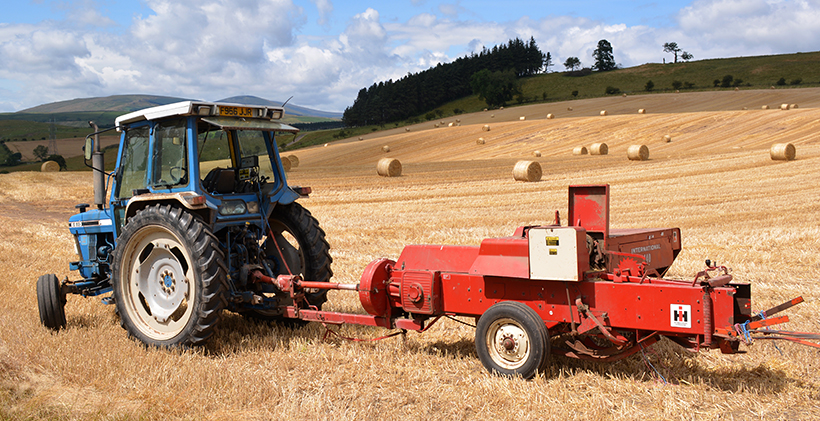
A 1988 Ford 6610 with International baler, photographed in July, 2014. (Pic: Alan Barnes)
With a new engine and a new transmission, it was hardly surprising that an improved hydraulic system was a feature of the 10 Series models. The comprehensive Ford independent hydraulic system was powered by a heavy-duty, 7.8gpm pump, which provided oil for the hydraulic power lift system and the remote valves. An auxiliary pump, with a 6gpm flow, was used specifically for lubrication, oil cooling, PTO control and the operation of the Dual Power system.
Hydraulic assistance
A factory-fitted assist ram was also available if the machine was to work with very heavy, linkage-mounted implements. The whole hydraulic system was protected by full-flow filtration, hydraulically-damped relief valves, a lift cylinder check valve and a hydraulic oil cooler.
The hydraulics provided precise position and draft control, and the automatic flow control gave a smooth and reliable draft response for improved control of linkage-mounted implements. The automatic drop control reduced the possibility of implement misalignment. An optional, high-flow, dual-pump system was also available, providing a flow of 14.75gpm of oil, which allowed simultaneous linkage and external service operations through the four-position closed centre remote valves. The valves had ‘raise’, ‘neutral’, ‘lower’ and ‘float’ position controls on the lever, with each vale having its own lever to allow the flow to be individually adjusted to meet the particular need of an application. These levers were conveniently positioned to the side of the operator’s seat.
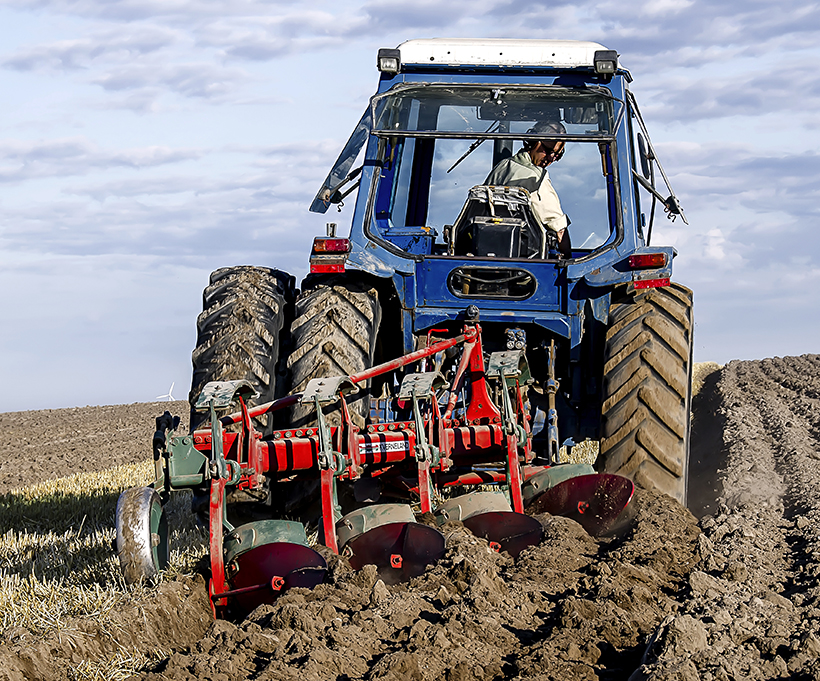
Ford 6610 at work with a Kveneland four-furrow plough. (Pic: Henrik Jensen)
The Category ll, three-point hitch was capable of handling over two tons of lift, which enabled the 6610 to be used with a wide range of heavyweight implements. The automatic drop control cushioned the lowering of mounted implements, while a top link transport latch, lynch pin storage on the lift rod forks and telescopic lower link stabilisers, were all standard fittings. An optional pick-up hitch, with integral swing drawbar, was also available, which enabled quick and easy interchange of implements.
Optional drive
The 6610 was offered as a two-wheel-drive model, although 4WD version was available as an option. Ford advertised this with the slogan ‘Power up front and traction all round’. The company maintained that the ‘tractors have a specially designed optional four-wheel-drive to meet the demands made on agricultural tractors today, while still maintaining the manoeuvrability and ground clearance’. The Centre Drive System produced a 50° turning angle, and gave a turning radius of just under 18 feet.
A range of tyre sizes was available, some being dependent on the tractors being intended for either the export or domestic markets. On the two-wheel-drive models, the front tyres were 7.50×16 or 10×16 as an option, while the four-wheel-drive variants were fitted with 11.2x24s. The rear tyres on both versions were 16.9×30 or 16.9×34, as an option.
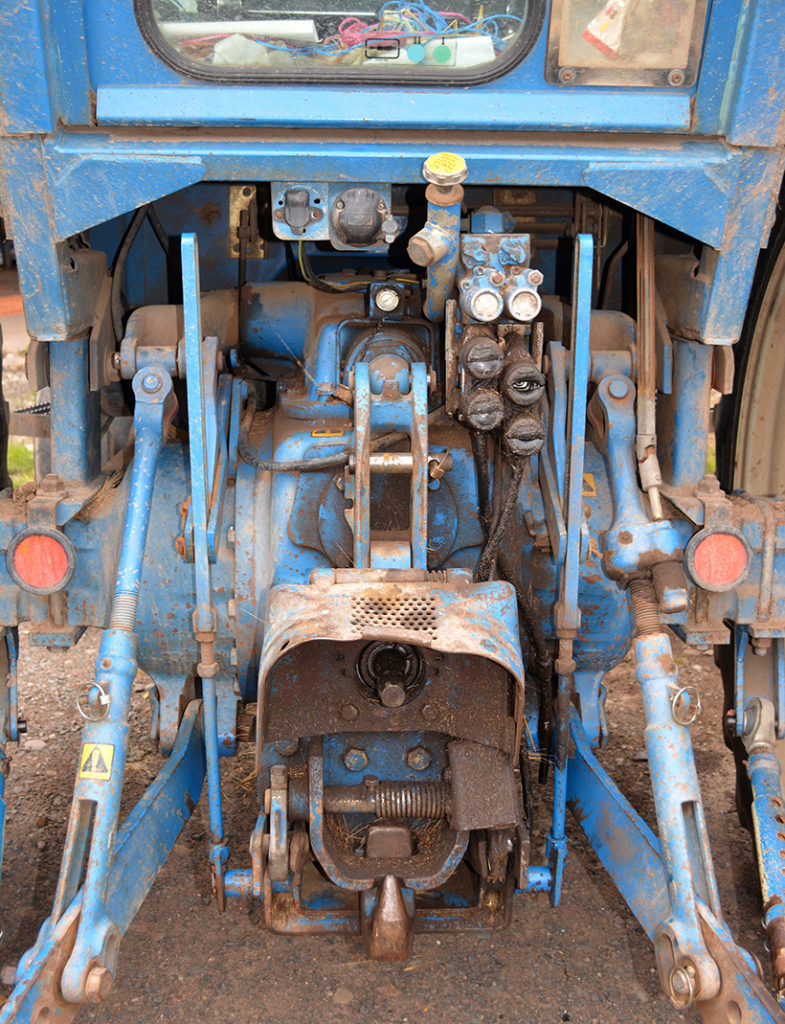
Hydraulics still in perfect working order. (Pic: Alan Barnes)
The two-wheel-drive version of the 6610 weighed in at 6,800lb without the cab, while the 4WD model tipped the scales at 7,300lb, again without the cab. The tractor was 12ft 1in long, 5ft 8½in wide and had a wheelbase of 87.5in. The height over the cab was 8ft 10½in, and the tractor had a ground clearance of 18.4in.
At the time of the 10 Series’ launch, in 1981, Ford hadn’t completed the third phase of the development project which dealt with the new, improved cab design. So, the work, which was intended to update the existing Sankey-built Q cab continued, and a series of mock-ups of the new cab – featuring thicker glass, foam insulation and thicker linings – were built at Basildon. The new cab, which was named the ‘Super-Q’, featured four halogen lights set into the leading edge of the roof, and was ready for testing in 1984.
Other improvements
As well as work on the new cab, other aspects of the 10 Series were being refined and improved, developments which would be incorporated into new versions of not only the 6610, but also the other models in the range. These improvements included saddle-mounted fuel tanks, changes to the gear linkage and floor-mounted levers. The revised models were designated ‘Force ll’, and production began in October 1985, with the official launch being held the following November. The new, Super Q cab became standard for the 6610, although the AP cab was also available as an option for both the 7610 and the 6610.
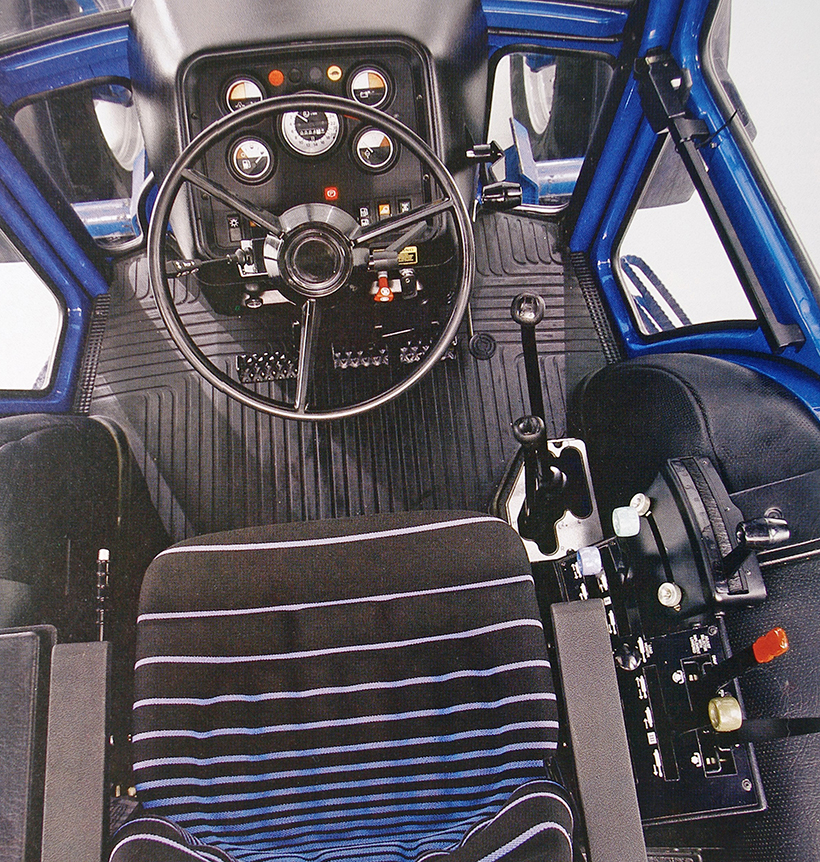
The Ford 6610’s interior. (Ford brochure photograph)
Ford described the cab as ‘A masterpiece of comfort and convenience’, although bouncing around in one on a freezing day in gale-force winds on the Cheviots, might give rise to a different opinion! However, in the early 1980s, these 10 Series cabs were arguably as good as anything else on the market. They featured two, wide doors, generous head, shoulder and leg room and the comfortable seat could be adjusted to suit the operator’s height, reach and weight. The large windscreen and the deep side and rear windows gave excellent, all-around visibility. Controls for the three-speed ventilation system were mounted in the roof, and fresh air was filtered through two, large dust filters.
The steering was light and the column-mounted gear levers were described as ‘smooth and easy-to-use’, although some would argue with that view. The dashboard layout was neat and clear, with a well laid out array of switches and warning lights, while the hydraulic controls, remote valve and PTO levers were all within easy reach.
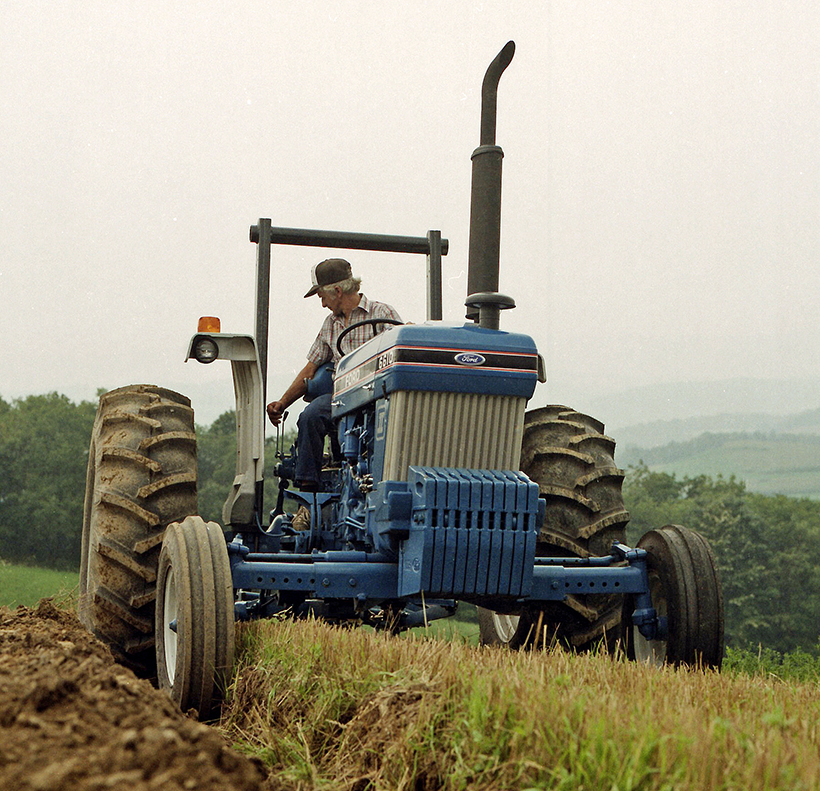
An open-platform 6610 at work. (Pic: CNH Industrial)
Overall, the 6610 proved itself to be an excellent and popular, mid-range tractor and, in a production run lasting over 10 years, the model sold well; not only in the UK, but also worldwide. The 6610 was eventually uprated and re-launched as part of the Generation lll series, and appeared as the 84hp Ford 6410, although the 6610 itself continued to be built as an export model until 1993.
The use of information and photographs from the Ford Archives courtesy of CNH Industrial and New Holland, is gratefully acknowledged. My thanks also to Stephen and James Shell for allowing access to their farm to photograph their tractor.
For a money-saving subscription to Ford & Fordson Tractors magazine, simply click here



